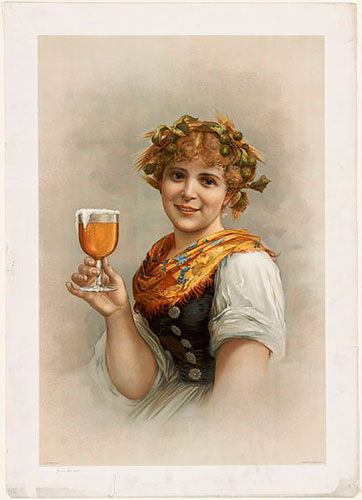Dunkelweizen, eisbock, barley wine, porter, India pale ale… what do they all mean? Craft brewing has exploded in popularity lately, and now everyone seems to have something to say about beer. Knowing how to pour a beer is one thing, but knowing about beer is almost as important!

The Basics
To make beer, you need four ingredients: water, yeast, malted grain, and hops, which is an aromatic herb that also helps preserve beer. It all begins by combining the water and grain into a liquid called wort that contains plenty of sugars and will, once fermented, become the beer.
Beers fall into one of two broad categories: ale and lager. Ales tend to have sweeter, more complex flavour profiles than lagers and are frequently treated with hops. Lager, on the other hand, tends to taste “cleaner” and less fruity or spicy than ale.
The difference comes down to the type of yeast used. Ales ferment with a kind of yeast that floats on top of the wort and lives at a much higher temperature. Lager yeasts live at a lower temperature and sink to the bottom. Lagers are also aged at low temperature, a process called ‘lagering’. These conditions profoundly affect the final product. In fact, brewing the same wort with either lager or ale yeast will yield entirely different beers!
Beyond Yeast: Creating Styles of Beer
Choosing the yeast is only a single step in creating a beer. Between choosing hops and grains to brew with, modifying the wort in various ways mid-fermentation, and ageing techniques, there are plenty of different beer styles that can be created. Let’s look at a handful.
Pilsner
Pilsners are clean-tasting, smooth, and probably one of the most popular lager styles in the world. They’re brewed pretty simply; fermented and aged at a low temperature, pilsners are textbook lagers. What makes them stand out are their complex, not-very-bitter hops.
Bock
Bocks are surprisingly full-bodied as lagers go. The defining feature of the bock style is the ‘decoction’ process used during fermentation where a portion of the wort is separated out, boiled, and returned to the wort in order to raise the overall temperature.
Pale Ale
This is a pretty broad class of beer that includes, among others, India pale ales, red ale, and amber ales. Like almost any other ale, they’re brewed at high temperatures and have a full, somewhat fruity or spicy flavour. The big difference in all these styles comes from the hops—India pale ales use intensely flavourful and bitter hops, whereas ambers tend to be milder—and from the grains in the wort.
We’ve only scratched the surface of the beer world, but if you really want to learn more about beer, there are plenty of resources online where you can do so. Just look up how your favourite beer is made!
However, if you’re really interested in knowing your booze, we offer bartending courses in addition to our RSA courses in Melbourne, so give that some thought, too.




